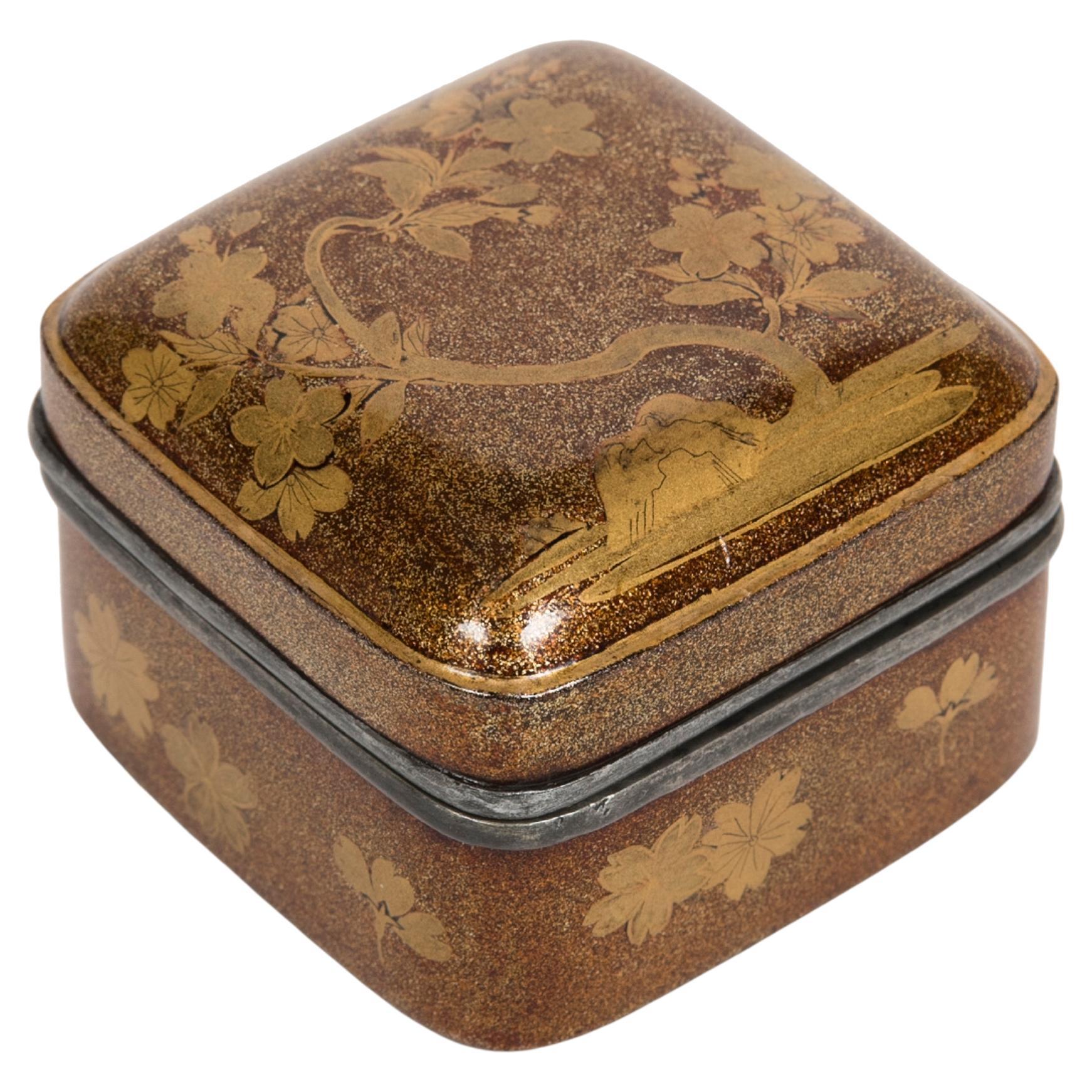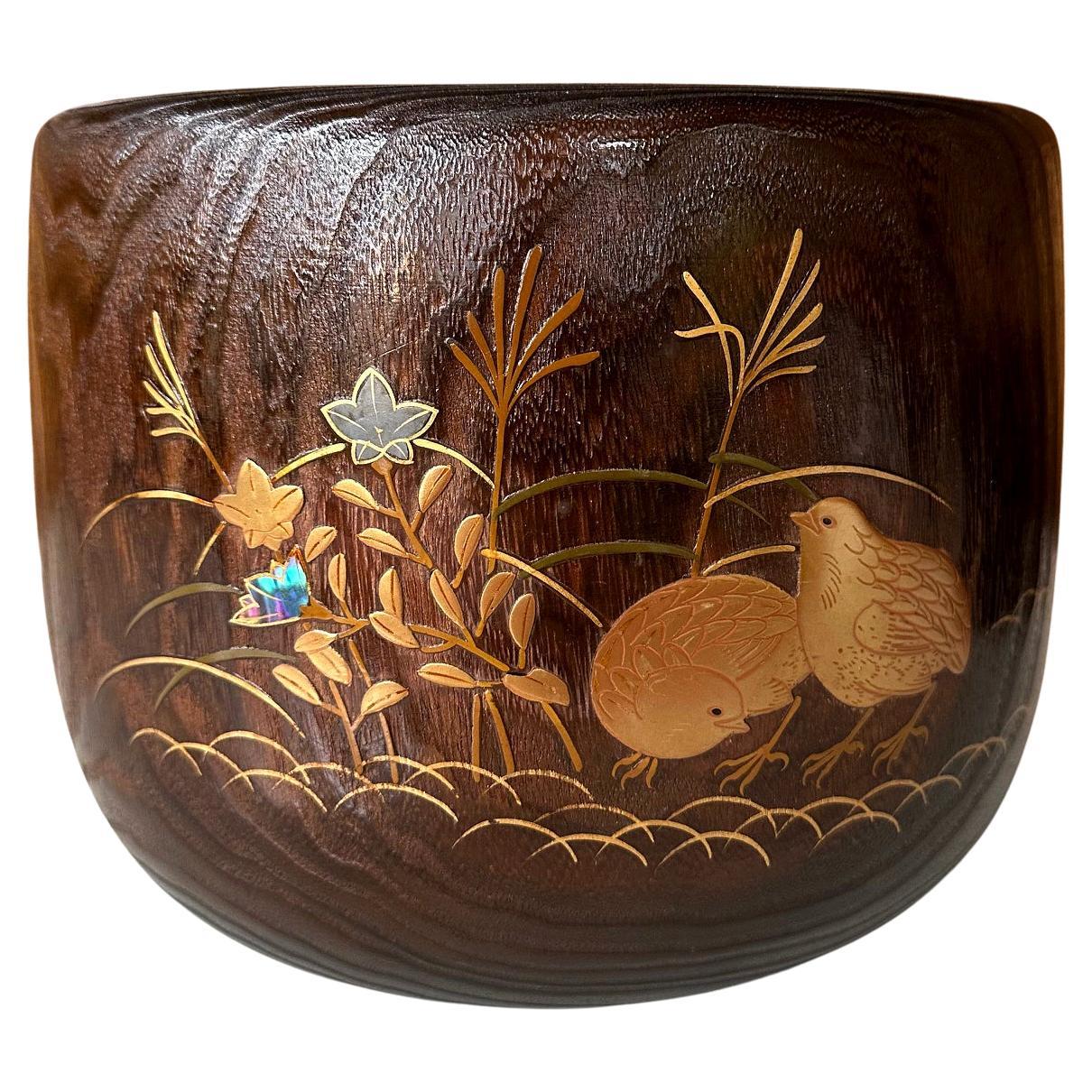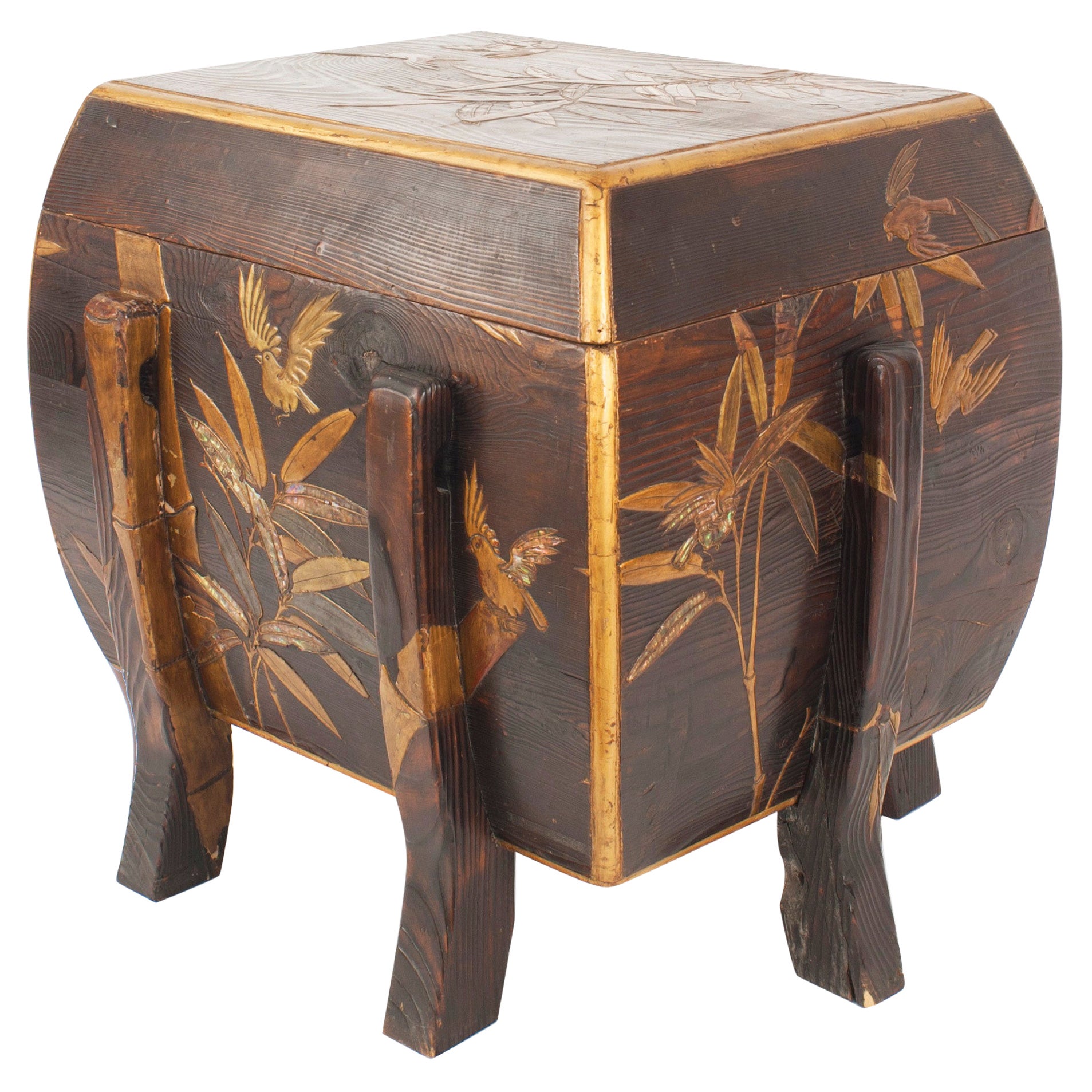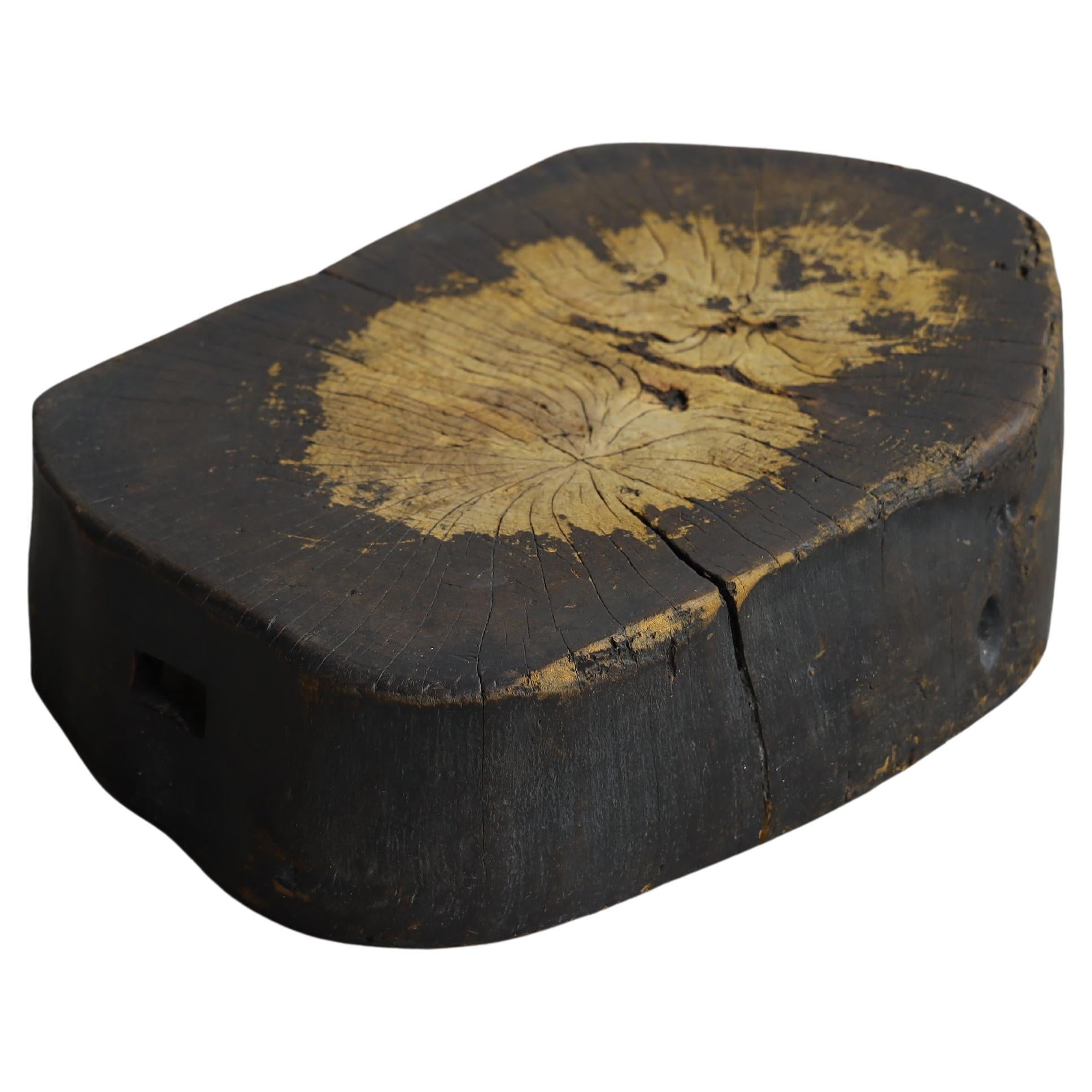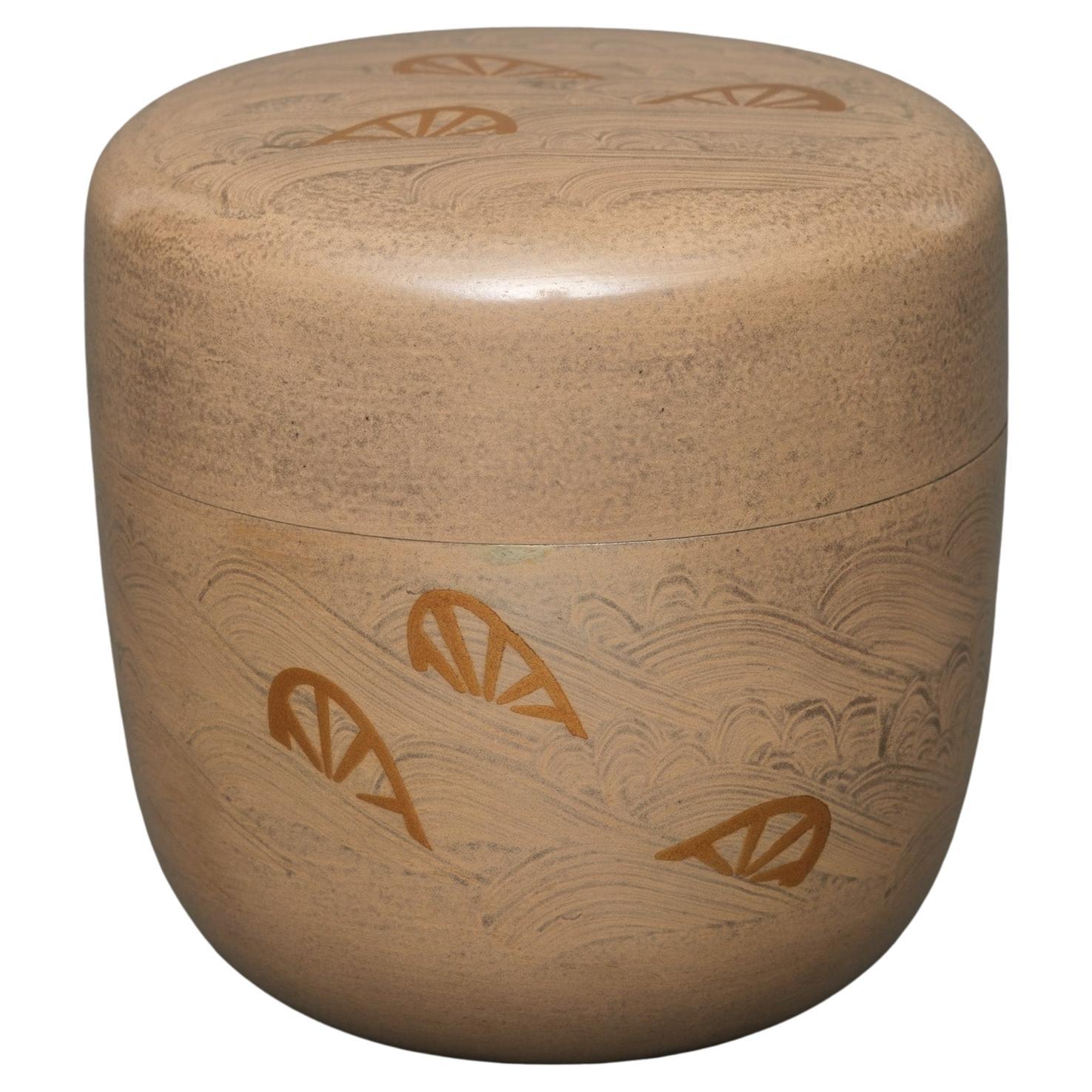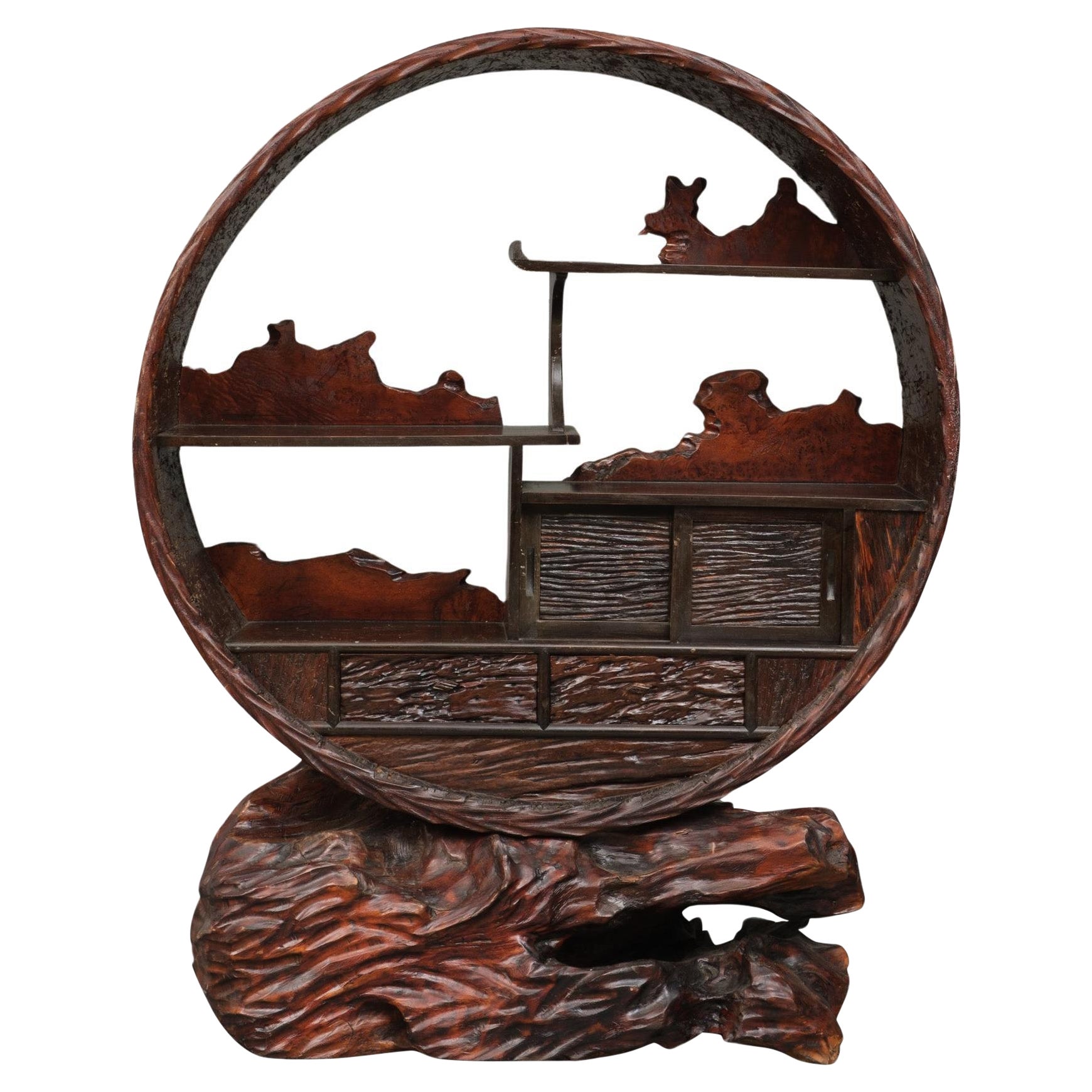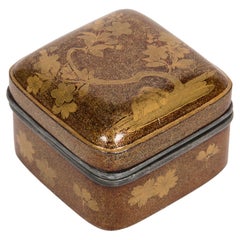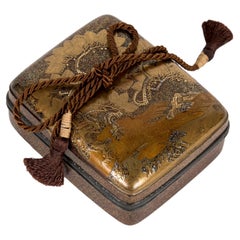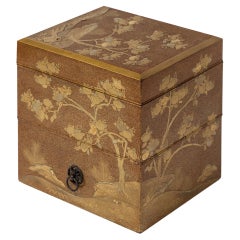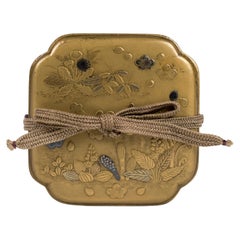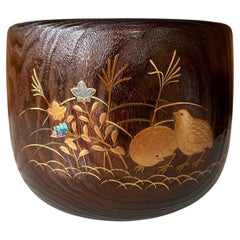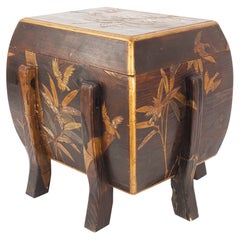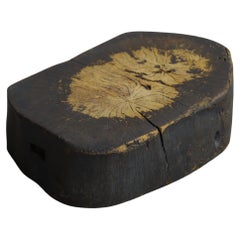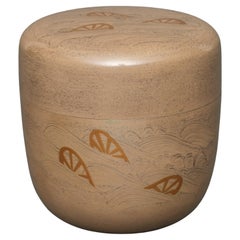Items Similar to Kobako in natural wood of a frog under a willow tree
Want more images or videos?
Request additional images or videos from the seller
1 of 6
Kobako in natural wood of a frog under a willow tree
$1,788.12
£1,326.61
€1,500
CA$2,448.02
A$2,742.58
CHF 1,427.51
MX$33,399.34
NOK 18,184.56
SEK 17,124.72
DKK 11,421.25
Shipping
Retrieving quote...The 1stDibs Promise:
Authenticity Guarantee,
Money-Back Guarantee,
24-Hour Cancellation
About the Item
Small kobako in natural wood made of a circular cross section, lacquered using both the maki-e technique and a transparent finish that grant a glossy finish to the bark. The composition reuses the wood rings motives to suggest the undulation on the surface of a pond, from which a tiny frog seems to emerge, creating a perturbation that is simply represented by four lines of gold lacquer. In the right corner a willow branch occupies almost half of the space, it seems to be rooted in the sapwood as if it was opening to the outside of the composition. This piece shows several techniques of lacquer. First the hira maki-e is only used for a mono chromatic gold tint, used for the foliage and the perturbation of the water. Whereas the trunk is treated with a neat nashiji technique, the maki-e is only used to highlight the anfractuosity of the trunk. The frog is represented with great details, outlines and small details are set with makie-e while the inside is made of deep nashiji lacquer in order to transmit the texture of a frog skin. In addition, the use of the raden technique permitted the artist to fit a small piece of mother of pearl on the frog back to represent the reflection of water on its skin. The frog (kaeru) is associated with luck and wealth. In feudal Japan, this extension of meaning is due to the frog's ability to return each year to the pond where it was born.
Japan – Taisho era (1912-1926)
Height: 3 cm - length: 6 cm - width: 7 cm
- Dimensions:Height: 1.19 in (3 cm)Width: 2.76 in (7 cm)Depth: 2.37 in (6 cm)
- Style:Taisho (Of the Period)
- Materials and Techniques:
- Place of Origin:
- Period:
- Date of Manufacture:1912-1926
- Condition:Wear consistent with age and use.
- Seller Location:PARIS, FR
- Reference Number:Seller: 2025-13481stDibs: LU8311243627172
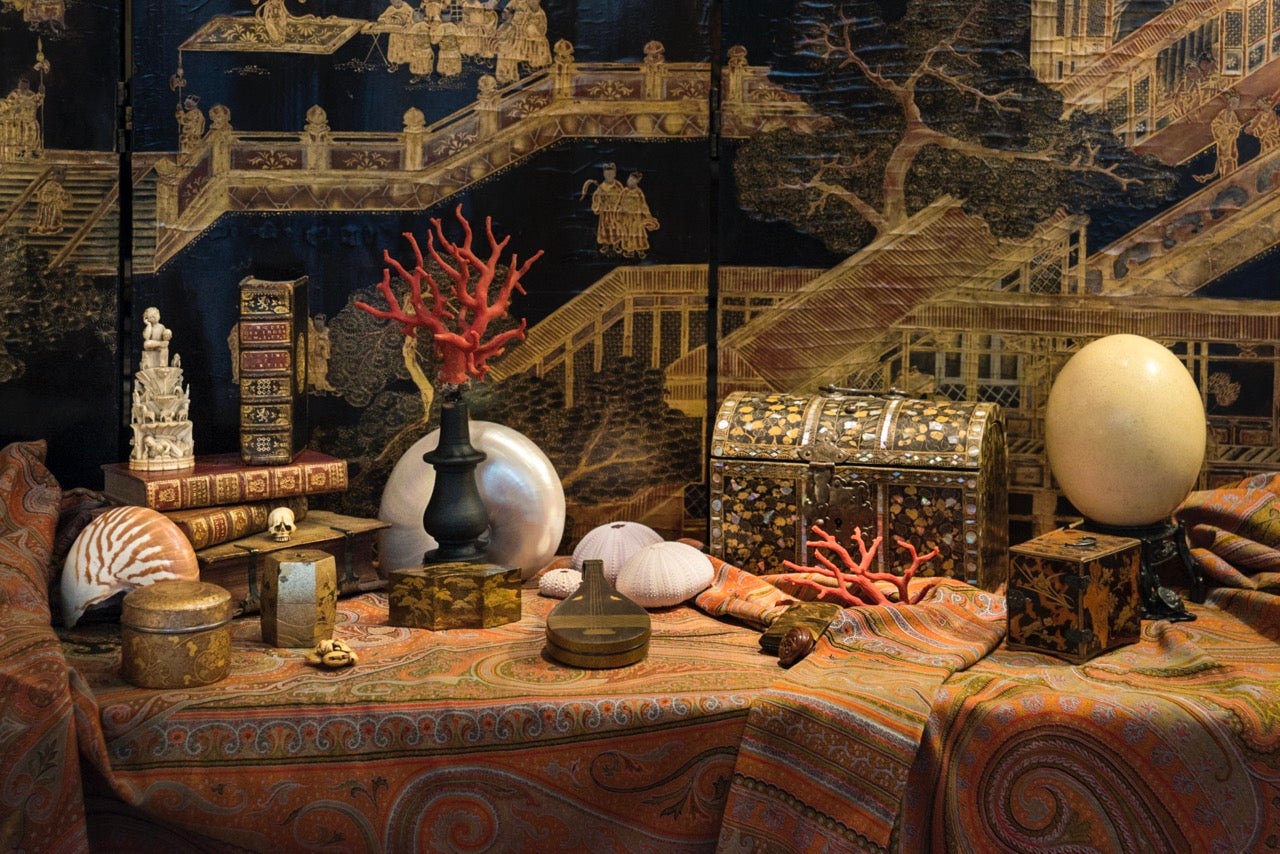
About the Seller
No Reviews Yet
Vetted Professional Seller
Every seller passes strict standards for authenticity and reliability
Established in 2013
1stDibs seller since 2023
Typical response time: Several days
- ShippingRetrieving quote...Shipping from: PARIS, France
- Return Policy
Authenticity Guarantee
In the unlikely event there’s an issue with an item’s authenticity, contact us within 1 year for a full refund. DetailsMoney-Back Guarantee
If your item is not as described, is damaged in transit, or does not arrive, contact us within 7 days for a full refund. Details24-Hour Cancellation
You have a 24-hour grace period in which to reconsider your purchase, with no questions asked.Vetted Professional Sellers
Our world-class sellers must adhere to strict standards for service and quality, maintaining the integrity of our listings.Price-Match Guarantee
If you find that a seller listed the same item for a lower price elsewhere, we’ll match it.Trusted Global Delivery
Our best-in-class carrier network provides specialized shipping options worldwide, including custom delivery.More From This Seller
View AllJapanese lacquered Cherry Tree Kobako
Located in PARIS, FR
Kobako in nashiji lacquer of square shape with a hira maki-e décor of a blossoming
cherry tree. Both of the four sides are adorned with golden lacquer cherry flowers,
represented i...
Category
Antique 19th Century Japanese Lacquer
Materials
Lacquer
Japanese landscape pine kobako box Edo period 18th century
Located in PARIS, FR
Rectangular black and gold lacquer kobako box decorated with pine trees in a mountain landscape in takamaki-e, kirigane and hiramaki-e lacquer. Background in nashi-ji lacquer. Surmou...
Category
Antique 18th Century Japanese Lacquer
Materials
Gold
Japanese Tebako in Nashiji lacquer adorned with golden Persimon flowers
Located in PARIS, FR
Tebako box with two compartments in golden and nashi-ji lacquer, decorated with golden, red, and kirigane lacquer, golden persimmon tree leaves, among rocks. The compartments are of ...
Category
Antique Early 19th Century Japanese Meiji Lacquer
Materials
Gold
Japanese golden kobako flowers Edo period 18th century
Located in PARIS, FR
Quadrangular kobako box decorated with flowers in gold and blue lacquer with aogai inlay. Lid and sides in fundame lacquer, underside and interio...
Category
Antique 18th Century Japanese Japonisme Lacquer
Materials
Gold
Miniature hokkai bako or kaioke, doll furniture replica of a traditional box
Located in PARIS, FR
Small hokkai bako or kaioke seashells game box, of circular form with its four feet, its bronzes and cordon, decorated with a motive of flowers of gold lacquer on a black lacquer bac...
Category
Antique Late 19th Century Japanese Meiji Lacquer
Materials
Gold, Bronze
Japanese Lacquered Tebako 'Box'
Located in PARIS, FR
Tebako box with three compartments in golden and nashi-ji lacquer, decorated with golden, red, and kirigane lacquer, golden persimmon tree leaves, among rocks. The compartments are of increasing size from the top. The decoration is in continuity.
Persimmon has been cultivated in southern China for more than 2500 years and is believed to have been introduced to Japan in the 8th century. The veneer is a tree with very hard wood, similar to ebony. According to a legend, one specimen survived the atomic bombing of Nagasaki on August 9, 1945, close to the epicenter. It is therefore in Japan a symbol of strength and longevity. It is also the national fruit of the country. It is eaten as a traditional dish during New Year's Day celebrations.
Tebako literally means "portable box...
Category
Antique 1860s Japanese Lacquer
Materials
Lacquer
You May Also Like
Fine Japanese Hibachi Lacquer with Inlays Meiji Period
Located in Atlanta, GA
A fine Japanese wood Hibachi with copper insert circa 1900-30s end of Meiji to Taisho Period. It can be used as a unique planter or to showcase a...
Category
Early 20th Century Japanese Meiji Lacquer
Materials
Copper
Japanese Lacquered Karabitsu Trunk
Located in Queens, NY
Japanese (19th Cent) brown lacquered karabitsu traveling trunk with carved birds and floral relief of gilt and pearl inlay resting on 6 legs.
Category
Antique 19th Century Lacquer
Materials
Lacquer
Wooden Low Table, Japanese Antique, Wabi-Sabi, Mingei
Located in Katori-Shi, 12
This is an antique wooden low table from the Meiji period.
It was used as a workbench by craftsmen at the time.
It is made of high-quality Japanese zelkova wood and finished with l...
Category
Early 20th Century Meiji Antiquities
Materials
Wood
Japanese Ecru Lacquered Natsume 棗 'Tea Caddy' with Maki-E of Carriage Wheels
Located in Amsterdam, NL
Uncommon ecru lacquer tea caddy (natsume) with a nice golden hiramaki-e (low-relief design) of cart wheels submerged in a wild swirling stream.
The design ...
Category
20th Century Japanese Lacquer
Materials
Giltwood, Lacquer
Japanese round wooden cha'dansu 茶箪笥 (tea cabinet)
Located in Amsterdam, NL
A remarkable round cha'dansu (tea cabinet) crafted from a hollowed tree trunk, resting on an organically shaped three-root base.
The exterior showcases a striking natural texture, e...
Category
Early 20th Century Japanese Furniture
Materials
Wood
Japanese antique wooden work board / 20th century / small display stand
Located in Sammu-shi, Chiba
This is an old Japanese wooden workbench made from zelkova wood (keyaki), known for its hardness and beautiful grain. The thick cross-sectional shape clearly reveals the concentric g...
Category
20th Century Japanese Taisho Antiquities
Materials
Wood
More Ways To Browse
Willow Tree
Antique Frog
Antique Bark
Boxwood Art
1912 Ring
Small Wood Trunk
Antique Ring Tree
Gold Tree Trunk
Japanese Trunk
Antique Asian Trunk
The Great Frog
Japanese Lacquer Pearl
Japanese Lacquer And Mother Of Pearl
Antique Mothers Ring
Japanese Mother Of Pearl Art
Bark Gold Ring
Japanese Wood Trunk
Japanese Tree Bark
